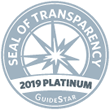BACKGROUND
Graves’ disease is the most common type of hyperthyroidism. Treatment options include antithyroid drugs (ATDs) that control the hyperthyroidism and definitive treatments that destroy the thyroid (radioactive iodine therapy and surgery). The ATDs currently in use in the United States are methimazole and propylthiouracil. In recent years and for many reasons, ATDs have become the first line of treatment for patients with Graves’ disease.
Because of the many effects of thyroid hormone on cells, including increasing cell growth, there is the possibility that thyroid hormones may help cancer cells to grow. Some studies have shown that patients with hyperthyroidism have an increase chance to develop cancer, such as breast, lung, prostate and thyroid cancer. A major problem with most of those studies is that they did not consider important personal risk factors for cancer, such as smoking and obesity. Other studies looking at the link between hyperthyroidism and cancer only looked at those patients who were treated with radioactive iodine therapy, since radiation is a risk factor for cancer.
The goal of this study is to shed some light about the risk of cancer in patients with Graves’ disease who are treated with ATDs.
THE FULL ARTICLE TITLE
Lee JY, et al. Cancer risks of patients with Graves’ disease who received antithyroid drugs as initial treatment: a nationwide population-based analysis. Thyroid 2024;34(10):1271-1279; doi: 10.1089/thy.2024.0178. PMID: 39228052.



